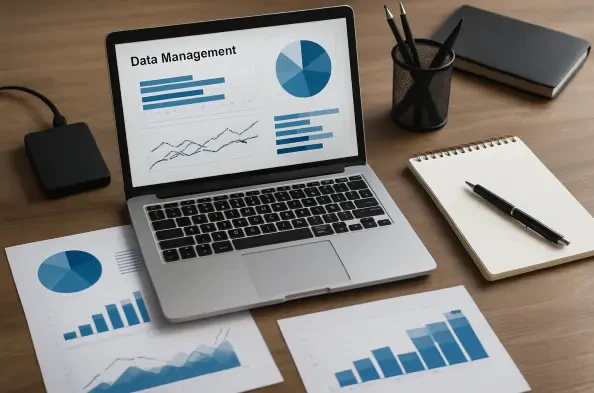In today’s rapidly advancing technological landscape, a profound transformation is reshaping the very foundation of IT management, driven by the remarkable capabilities of artificial intelligence (AI), which is enabling a shift from a reactive to a predictive model. For too long, IT teams have been tethered to a reactive approach, scrambling to address server failures, application glitches, or network disruptions only after they’ve already caused chaos. This outdated method often leaves businesses vulnerable to downtime and frustrated employees. However, AI is revolutionizing this dynamic, enabling predictive IT management where potential issues are identified and resolved before they even surface. Through cutting-edge solutions like Compugen’s Modern Work services, powered by HP’s Workforce Experience Platform (WXP), organizations can now harness real-time data and analytics to anticipate problems and prioritize strategic growth. This evolution not only enhances operational efficiency but also redefines IT’s role as a core driver of business value, moving beyond mere troubleshooting to proactive empowerment.
Breaking Free from Reactive Constraints
The traditional reactive model of IT management has long been a significant barrier to efficiency, keeping teams locked in a relentless cycle of crisis response that stifles progress. Under this approach, IT professionals often find themselves addressing critical failures—such as sudden system crashes or performance bottlenecks—only after they’ve disrupted operations. This constant firefighting consumes time and resources, leaving little room for forward-thinking initiatives. Moreover, the reactive mindset often results in unplanned downtime, frustrated end-users, and escalating costs as issues compound over time. The strain on IT staff is palpable, as they are forced to prioritize urgent fixes over strategic planning, ultimately hindering the organization’s ability to innovate and adapt in a competitive landscape. The limitations of this model are clear: it’s a short-term bandage on deeper systemic challenges that demand a more sustainable solution.
AI-driven predictive IT offers a compelling alternative by fundamentally altering how problems are approached, shifting the focus from reaction to prevention with remarkable precision. By leveraging advanced analytics and machine learning, tools like Compugen’s Modern Work services enable IT teams to monitor systems in real-time, identifying early warning signs of potential issues—such as hardware degradation or unusual performance trends—before they escalate into full-blown disruptions. This proactive stance minimizes downtime and allows businesses to maintain seamless operations even under pressure. Unlike the reactive model, which keeps teams on the defensive, predictive IT empowers them to allocate resources toward long-term goals, such as infrastructure optimization or digital transformation projects. The result is a more resilient IT environment where disruptions are not just managed but largely avoided, paving the way for sustained operational stability.
Automation as a Catalyst for Efficiency
One of the most transformative aspects of AI in IT management lies in its ability to automate repetitive, time-intensive tasks that have historically bogged down skilled professionals. Routine activities like applying software patches, updating drivers, or conducting compliance checks often require significant manual effort, especially across diverse devices and operating systems. These mundane responsibilities not only drain valuable time but also increase the risk of human error, potentially compromising system security or performance. Compugen’s solutions, supported by HP’s WXP, address this challenge by automating such processes with precision, ensuring consistent policy enforcement and silent updates without the need for constant oversight. This reduction in manual workload translates into fewer errors and a more streamlined operation, allowing IT departments to operate at peak efficiency while maintaining robust standards.
Beyond simply saving time, automation redefines the role of IT staff, enabling them to pivot from tactical troubleshooters to strategic contributors within their organizations. With repetitive tasks handled by AI-driven systems, professionals can redirect their expertise toward high-value initiatives, such as designing innovative solutions or enhancing cybersecurity frameworks. This shift is particularly impactful in environments where IT teams are understaffed or overstretched, as it maximizes the impact of limited resources. Furthermore, automation ensures scalability, allowing organizations to manage growing fleets of devices without a proportional increase in workload. Through Compugen’s tailored services, businesses can achieve a balance between operational demands and strategic ambition, fostering an IT culture that prioritizes creativity and forward planning over mere maintenance. The ripple effect is a workforce empowered to drive meaningful progress.
Prioritizing People with User-Centric AI
AI’s influence on IT management extends far beyond technical systems, placing a significant emphasis on the human element through user-centric insights that elevate workplace experiences. Traditional IT often focuses solely on hardware and software metrics, overlooking how technology impacts the individuals who rely on it daily. Compugen’s Modern Work services change this narrative by integrating real-time user feedback and sentiment analysis to identify friction points, such as sluggish applications or unreliable network connections. By addressing these pain points proactively, IT can ensure that technology serves as an enabler rather than a barrier to productivity. This approach not only improves day-to-day operations for employees but also fosters a sense of trust in IT as a supportive function, aligning technical performance with human needs.
The benefits of this user-focused strategy are far-reaching, as it directly correlates with enhanced employee satisfaction and engagement across the board. When IT systems are fine-tuned to address user-reported issues—whether it’s a lagging device or inconsistent connectivity—workers can perform their roles without unnecessary interruptions, boosting morale and efficiency. Moreover, Compugen’s ability to analyze sentiment data provides IT teams with a deeper understanding of workforce needs, allowing for targeted interventions that make a tangible difference. This holistic perspective transforms IT from a backend operation into a frontline contributor to organizational culture, ensuring that technology investments yield returns not just in uptime but in employee well-being. The synergy between system health and user experience creates a workplace where both technology and people thrive in harmony.
Bridging New and Existing Systems Seamlessly
A critical advantage of adopting predictive IT lies in its ability to integrate smoothly with established infrastructures, avoiding the upheaval often associated with technological transitions. Many organizations hesitate to embrace new solutions due to fears of disrupting existing workflows or invalidating prior investments in platforms like Microsoft Intune or ServiceNow. Compugen’s services are designed to alleviate these concerns by offering compatibility with such systems, ensuring that predictive capabilities enhance rather than replace current setups. This thoughtful integration minimizes downtime during implementation and allows businesses to layer advanced AI-driven tools over their existing frameworks, creating a hybrid environment where legacy and innovation coexist without friction.
This seamless approach also maximizes the return on investment for organizations already committed to specific IT ecosystems, reinforcing the practicality of predictive management. By extending the value of current tools through WXP-powered insights, Compugen enables a gradual shift to proactive strategies without the need for costly overhauls or extensive retraining. The result is a transition that feels natural rather than forced, preserving operational continuity while introducing cutting-edge features like real-time analytics and early issue detection. This compatibility is especially vital for enterprises with complex, multi-layered IT environments, where abrupt changes could risk stability. Instead, the focus remains on enhancing what’s already in place, ensuring that the move to predictive IT is both accessible and sustainable for businesses of all sizes.
Quantifying the Value of Predictive Strategies
The shift to predictive IT isn’t just a conceptual improvement; it delivers concrete, measurable outcomes that underscore its transformative potential for organizations. Through continuous monitoring and data-driven insights, solutions like those offered by Compugen enable businesses to track significant gains in system uptime, operational efficiency, and even employee satisfaction. Metrics reveal fewer IT incidents as potential problems are addressed preemptively, reducing the frequency and severity of disruptions. Additionally, cost savings emerge from optimized resource allocation and decreased emergency interventions, allowing budgets to be redirected toward innovation rather than repairs. These tangible results provide a clear justification for investing in AI-driven IT, demonstrating its role as a cornerstone of modern business resilience.
Sustainability also emerges as a notable benefit, as predictive IT extends device lifecycles and minimizes electronic waste through strategic maintenance and timely upgrades. By identifying when hardware components are nearing failure, Compugen’s tools help organizations replace or repair only what’s necessary, avoiding premature disposals. This not only lowers environmental impact but also aligns with corporate responsibility goals, an increasingly important consideration for stakeholders. Employee morale sees a boost as well, with fewer technology-related frustrations leading to a more positive work environment. These diverse outcomes—spanning financial, operational, and ethical dimensions—illustrate how predictive IT transcends traditional metrics of success, offering a comprehensive framework for improvement that resonates across every facet of a business.
Reflecting on a Proactive Legacy
Looking back, the journey from reactive to predictive IT management marked a pivotal turning point for countless organizations striving to overcome the inefficiencies of constant crisis response. The adoption of AI-driven tools, exemplified by Compugen’s Modern Work services and HP’s Workforce Experience Platform, fundamentally altered how disruptions were handled, shifting the emphasis to prevention over reaction. Automation streamlined mundane tasks, user insights elevated employee experiences, and seamless integrations ensured smooth transitions, all while delivering measurable gains in efficiency and sustainability. As businesses reflected on this shift, the focus turned toward building on these foundations—exploring how predictive IT could further evolve to address emerging challenges like cybersecurity threats or hybrid work environments. The path forward involved continuous investment in AI innovation and fostering a culture of proactive problem-solving, ensuring that IT remained a strategic asset for years to come.






